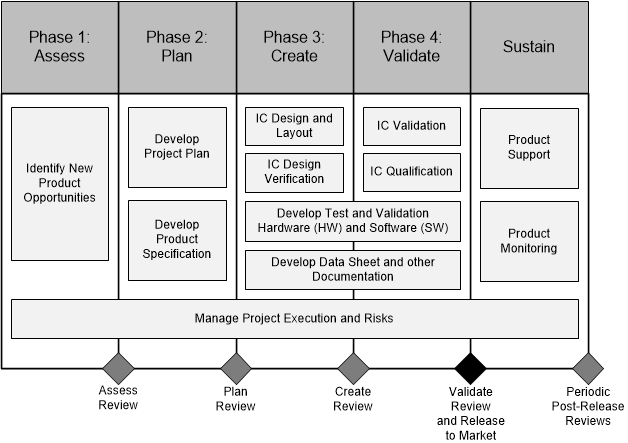SFFS169A April 2022 – May 2022 TPS3704 , TPS3704-Q1
- 1Introduction
- 2 TPS3704x-Q1 Hardware Component Functional Safety Capability
- 3Development Process for Management of Systematic Faults
- 4 TPS3704x-Q1 Component Overview
- 5Description of Hardware Component Parts
- 6 TPS3704x-Q1 Management of Random Faults
3.1 TI New-Product Development Process
Texas Instruments has been developing components for automotive and industrial markets since 1996. Automotive markets have strong requirements regarding quality management and product reliability. The TI new-product development process features many elements necessary to manage systematic faults. Additionally, the documentation and reports for these components can be used to assist with compliance to a wide range of standards for customer’s end applications including automotive and industrial systems (e.g., ISO 26262-4, IEC 61508-2).
This component was developed using TI’s new product development process which has been certified as compliant to ISO 9001 / IATF 16949 as assessed by Bureau Veritas (BV).
The standard development process breaks development into phases:
- Assess
- Plan
- Create
- Validate
Figure 3-1 shows the standard process.
 Figure 3-1 TI New-Product Development
Process
Figure 3-1 TI New-Product Development
Process